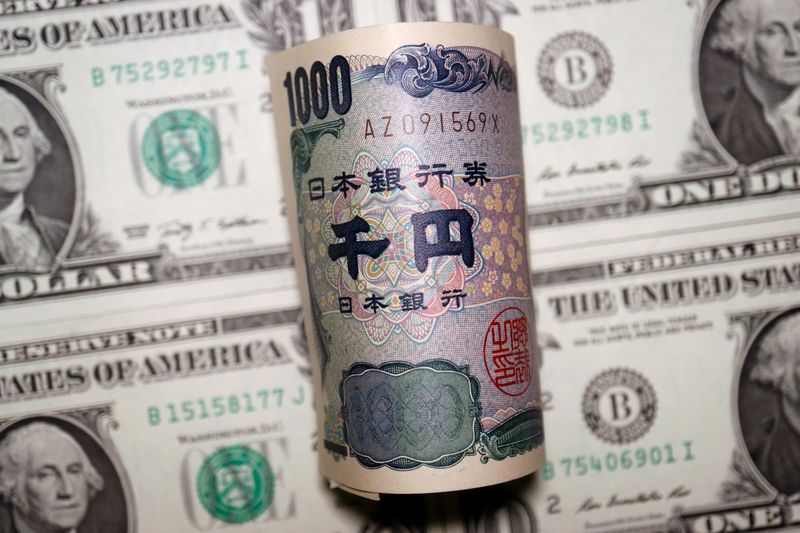By Rae Wee
SINGAPORE (Reuters) – The yen got a boost on Thursday on expectations that the Bank of Japan will review the side effects of its monetary easing, while the dollar slipped and wobbled near a seven-month low against the euro ahead of U.S. inflation data later in the day.
The Japanese yen surged roughly 0.8% to a session high of 131.385 per dollar in Asia trade, following a Yomiuri report that the BOJ will review the side effects of its monetary easing at next week’s policy meeting and may take additional steps to correct distortions in the yield curve. The yen last bought 131.50 per dollar.
The news follows the BOJ’s surprise tweak in December to its bond yield control, though the move has failed to address distortions caused in the bond market from the central bank’s massive bond buying.
“The report is likely to add to the (yen) optimism,” said Saktiandi Supaat, regional head of FX research and strategy at Maybank.
“The upcoming BOJ meeting … expectations of upward revisions to the bank’s inflation forecast and the forthcoming announcement of a new BOJ governor, will likely feed into the expectation of a policy shift.”
Elsewhere, the dollar was adrift ahead of the closely watched U.S. inflation data, which could provide more clarity on how much inflation in the world’s largest economy has moderated and on the Federal Reserve’s rate-hike path.
Sterling gained 0.15% to $1.2169, while the euro was last 0.11% higher at $1.0769, after rising to a seven-month peak of $1.07765 in the previous session.
The U.S. dollar index fell 0.07% to 103.05, not far off its seven-month low of 102.93 hit earlier in the week.
Expectations that the Fed may be nearing the end of its aggressive monetary policy tightening campaign and that it may not have to raise rates as high as previously feared has already sent the greenback tumbling to fresh lows against its peers this year.
“I think if we do get a pretty soft CPI report … that would indicate that inflation is on a sustained downward trend, which is what the FOMC is looking for,” said Carol Kong, a currency strategist at Commonwealth Bank of Australia (OTC:CMWAY).
As for the euro, Kong said that the single currency has drawn support from “some dovish repricing” of the Fed’s rate increases, as compared to a “belatedly hawkish” European Central Bank.
The Aussie rose 0.25% to $0.6923, while the kiwi edged up 0.15% to $0.6376.
Data released on Thursday showed that Australia’s trade surplus unexpectedly widened in November and came in well above forecasts.
The Australian and New Zealand dollars have started the year on a strong footing against the backdrop of China’s reopening from its COVID-19 isolation, which has driven demand for riskier assets.
The offshore yuan last stood at 6.7630 per dollar, after hitting a five-month top of 6.7545 per dollar earlier in the session, on optimism that China’s economy is on the road to recovery.



